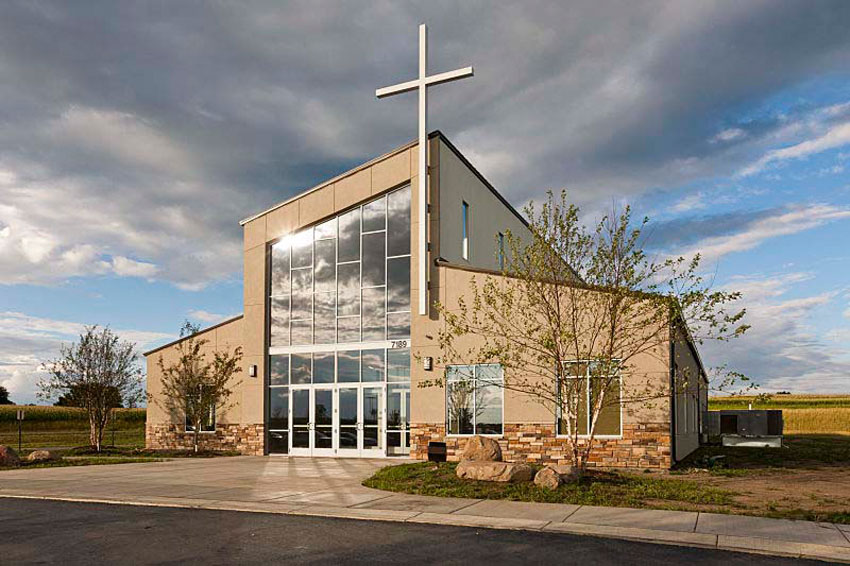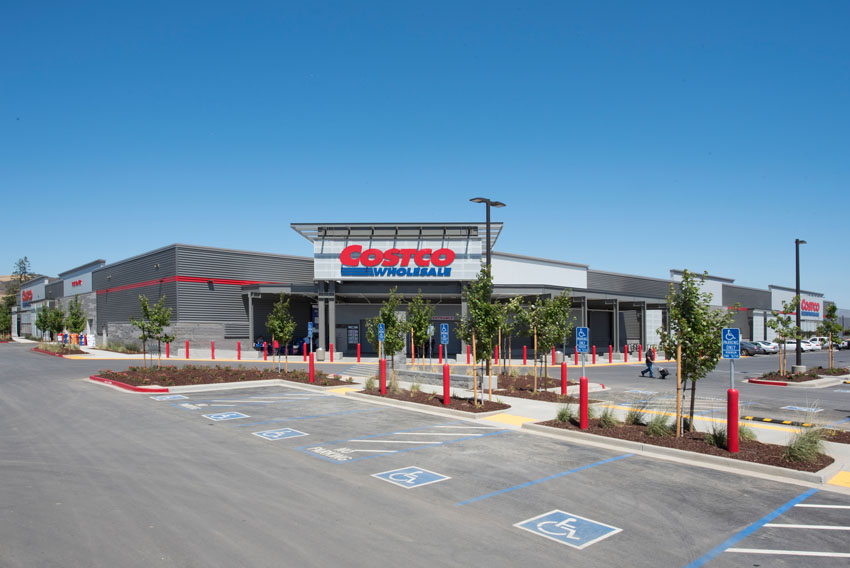Creative Design Alternatives Using Metal Building Systems
Individual Metal Building Systems Comparisons
With a better understanding of the realities of MBSs, we can turn our attention to some of the details of designing and specifying an entire building package or just parts of an MBS to incorporate into the rest of a traditionally constructed building. For discussion purposes, each of the following portions of an MBS will be reviewed independently, allowing either a complete metal building package to be specified and delivered or a hybrid design that uses some metal building components and some traditional construction. Of course, keep in mind that using more traditional materials means less of a single-source supplier and some of the benefits that go with it, but with proper attention to details, excellent results can still be achieved.
Primary Structural-Steel System
The primary structural members in an MBS are typically the tapered frames that are engineered and fabricated to meet the structural demands of the building. One such member can be used to create a single-slope profile, or two of these members can be joined together to form a gable-style roof that is either symmetrical or asymmetrical. The slope of the roof can vary from as little as ¼:12 (low-slope roofing) up to 12:12 (45 degrees) or steeper, meaning that the overall building heights can be customized accordingly. Since these components are custom engineered, the loading is site and building specific, allowing them to be sized economically and efficiently. They can be designed as clear-span welded built-up frames without any interior columns or for very wide buildings as multi-span layouts, incorporating interior columns as needed. There are also some systems available as long-span roofing members that can provide column-free bay spacing up to 70 feet across and other clear span designs that can be on the order of 400 feet.
Note that the primary frames in the interior of an MBS are designed to carry the loading on either side of it (i.e., half of the structural bay on either side) as per typical structural design practice. Since the building end frames of an MBS only carry half of what an interior frame does, they can be downsized accordingly to save more material and cost. However, if the plan is to allow for a future expansion of the building on an end, then that end frame can be designed as an interior one, allowing it to remain in place and streamline the expansion when the time is right.
In between the building frames, regardless of type or size, bracing is used for structural requirements related to shear loading, wind, or seismic conditions. The custom-engineered solution in this case may include diaphragm bracing from attached sheathing whenever used but will often be supplemented and/or replaced with rod, angle, or cable “X” bracing. In some cases, cantilever columns or portal frames can be used where “X” bracing cannot be accommodated.

Primary and secondary metal building components can be combined with other building materials and systems to create unique and satisfying designs for buildings of all types.
Secondary Structural-Steel System
With the primary structure in place, squared, and braced the secondary structural elements can be added. Secondary framing is commonly made from cold-formed steel components that meet established standards for quality and grade. They can take various forms and shapes but generally fall into three common categories:
- Girts and purlins: These are terms for similar but different components. A girt is a horizontal structural member in a wall that provides lateral support to resist wind loads. Girts are also used to create a framed opening around windows and doors. Purlins, on the other hand, perform the same lateral support but for the roof system and are usually run across the top of the primary steel. Both girts and purlins are roll-formed “Z” sections that are typically 8, 10, or 12 inches deep.
- Eave struts: These are secondary members that are installed along the roof eaves to support the edge of the roofing panels. They are typically roll- or brake-formed “C” sections with varying width and depths to suit the eave conditions.
- Wall-base angle/trim: These provide support for metal wall panels and closes off the open ribs at their base. This one-piece member can be fabricated with or without a panel notch in the concrete foundation.
The secondary framing can also be open-web steel joists (bar joists) when the distance between the primary frames is greater than 30 feet.
Note that the primary purpose of the secondary framing is to support and secure metal roof and wall panels to the primary framing. It is a proven system that has complete structural integrity thus saving time and money during installation. Nonetheless, other types of secondary framing, such as metal studs and sheathing, can also be incorporated where desired or detailed as part of the building design.
Roof System
The most common roofing provided as part of an MBS (or provided as a separate product) is metal roofing. However, since very-low-slope roofs are possible, an MBS can accommodate any type of roofing, including single-ply membranes or built-up roofing systems. In those cases, coordination with the MBS manufacturer is a good idea to review details for drainage, flashing, coping, etc.
If metal roofing is selected, then there are many options. The profile can be a standing seam, ribbed, lapped, or other choice with either concealed or surface fasteners. The roofing is available in a variety of thicknesses (gauge) related to the needed strength for site conditions or building structural design. The finish and color of metal roofing can be selected from a wide range of standard offerings with custom colors also available. Roof insulation may be integral to the roofing panels in the form of insulated metal panels (IMPs), which provide a continuous layer of rigid insulation interrupted only by the panel seams. Alternatively, or in addition, roof insulation can be provided in conventional manners, such as batt or board insulation or spray foam. The details of the insulation need to be coordinated with the MBS manufacturer so that the depth of the purlins can correctly accommodate the depth of the insulation. In addition to the above, a complete roof system will include all fasteners, sealants, soffits, flashing, and roof trim as part of the package.
Wall System
Similar to roofing, MBSs can incorporate any type of wall finish, including tilt-up concrete, masonry, metal studs with cladding, EIFS, or other common wall systems. All of these will secure and attach to the primary framing, but the details of any modifications to the secondary framing will need to be coordinated based on the wall materials used. If metal wall panels are used, the fabrication details will be the basis for coordination with the secondary and primary framing.
Metal wall panels are essentially long sheets of finished steel siding that are available as part of an MBS or as an individual product. They come with the options of being flat (architectural) or ribbed (rounded or squared) and capable of being installed in horizontal or vertical patterns. In all cases, the finish and color of metal wall panels is customizable from standard or custom offerings—both for the exterior and interior of the panels. Wall insulation can be installed in traditional manner or insulated metal panels, similar to IMP roofing panels, are also available for walls. Matching trim, corners, fasteners, and sealants are all available to complete the wall package.
Other Items
In addition to all of the fundamental components described above, there are also a variety of support items available from metal building manufacturers. The most common are metal gutters and downspouts that are designed to blend in with the building trim and are custom sized to meet the needs of the roof and rain-collection area. Fenestration can be included as well in the form of windows, doors, and frames or translucent roof panels that act as skylights. These will typically be held in place with girts and purlins that are coordinated and sized during the engineering/shop drawing phase. Finally, any miscellaneous accessories, including fasteners, specialty trim, flashings, etc., are usually all available as coordinated products from the MBS manufacturer.
Conclusion
Architects have a choice in how low-rise, nonresidential buildings are designed and constructed and can be very well served by integrating MBSs into projects. Despite some misperceptions, the reality is that they are used very successfully in all types of low-rise commercial and institutional buildings, including retail buildings, wholesale centers, office buildings, schools, health care facilities, university buildings, etc. They are not limited to big, boxy shapes with sloped roofs. In fact, many look like anything the architect chooses such that no one thinks of it as a “metal building” when it is complete—just as a well-designed building, which is exactly what it is.










